With the Royal Air Force retiring its final Tornado aircraft this week, Gareth Stringer takes a look at the history behind this hugely successful platform, one that has provided the UK’s frontline strike capability for three decades. Images as credited.
In 1968 a group of nations came together to investigate procuring a replacement for the venerable Lockheed F-104G Starfighter. West Germany, the Netherlands, Belgium, Italy, and Canada formed a working group to look at potential replacements for Lockheed’s ‘Missile with a Man In’, initially under a project titled the Multi Role Aircraft (MRA) but later called the Multi Role Combat Aircraft (MRCA).

ZA590 GR.1 TWCU / 45 Squadron RAF Honington 1990 © John Higgins – Global Aviation Resource
Great Britain joined the MRCA group in 1968 and shortly afterwards a memorandum of agreement was drafted between Britain, West Germany, and Italy. While the MRCA project planned to produce a single-seat replacement for the F-104G and a two-seat strike fighter for Britain and West Germany, Canada and Belgium pulled out of these discussions in 1969.
For Great Britain the need was urgent. In 1965 its own MRCA project the TSR-2 had been cancelled by government and numerous proposals made during the intervening years had failed to progress beyond the drawing board. While orders for the SEPECAT Jaguar and McDonnell Douglas F-4 Phantom had been placed, no true replacement for the post war V-Bombers had been identified, with an order for the General Dynamics F-111 placed and then also cancelled.
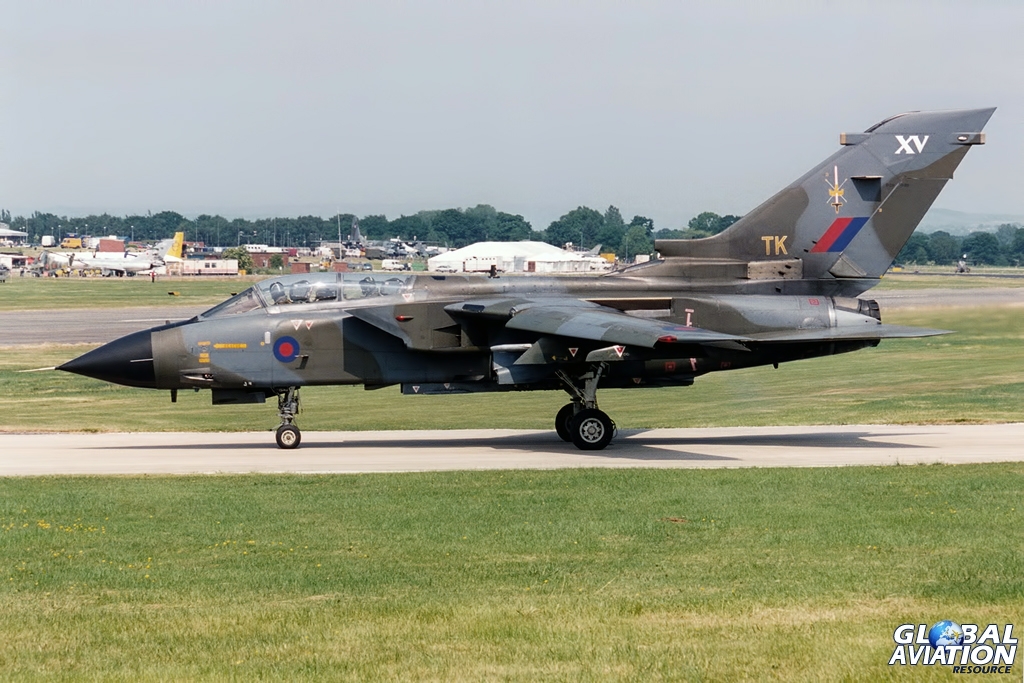
ZA608 15 Squadron Tornado GR.1 Woodford 1994 © John Higgins – Global Aviation Resource
The four remaining partner nations – United Kingdom, Germany, Italy and the Netherlands – formed Panavia Aircraft GmbH on 26 March 1969, though the Netherlands subsequently decided to withdraw, in 1970.
Panavia, by now a tri-national consortium, pushed ahead with the MRCA project and was comprised of three well-known aircraft manufacturers – British Aerospace, Messerschmitt-Bolkow-Blohm (MBB) and Aeritalia.
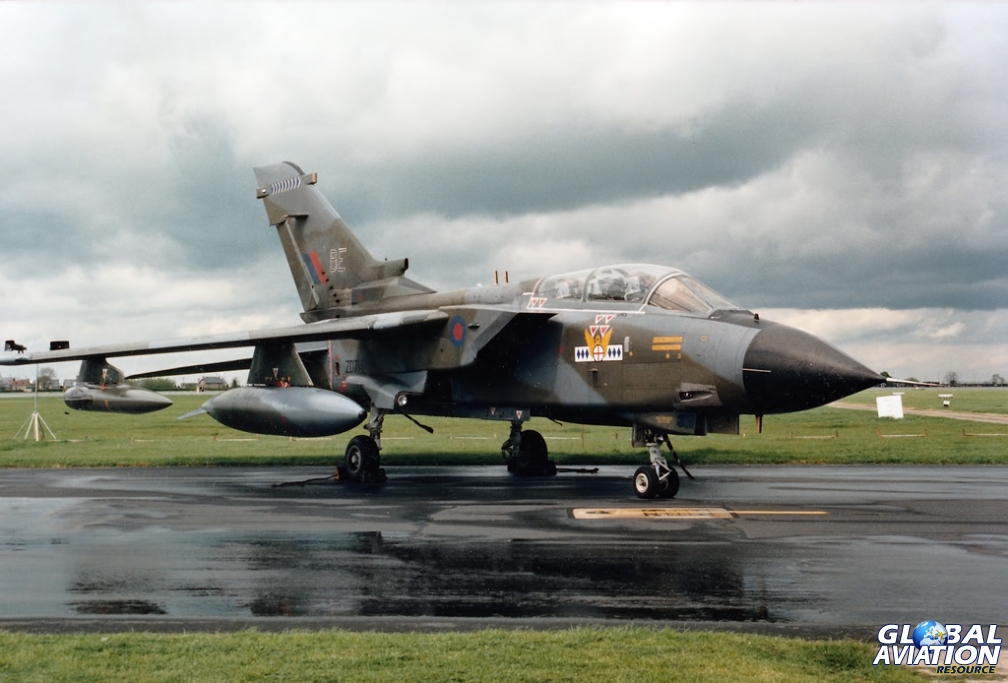
14 Squadron Tornado GR.1 © Gareth Stringer – Global Aviation Resource
MRCA was an ambitious project with a single airframe design that would eventually go on to replace a host of existing operational aircraft – Starfighter, Vulcan, Buccaneer, Canberra, Jaguar (in the reconnaissance role), Phantom and Lightning. A further consortium was also formed under the name Turbo Union to produce the MRCA’s new RB199 engine, this being a further tri-national effort comprising Rolls Royce, MTU and FIAT.
By May 1970, the various proposed concepts had been whittled down to just two; a single-seat Panavia 100 (West Germany’s preference), and the twin-seat Panavia 200 (the RAF preference), and it was this latter design which would eventually become the Tornado.

31 Squadron Tornado GR.1 © Gareth Stringer – Global Aviation Resource
The three governments declared their absolute intention to proceed with the project in September 1971, although, interestingly, at this stage, the aircraft was intended solely for the low-level strike mission. It was the RAF, finally deciding that it definitely needed an air defence fighter / interceptor, which then initiated the development of the Tornado ADV (Air Defence Variant). The history of what became the Tornado F.2 and then F.3 was covered by GAR when that version of the aircraft retired in 2011. You can find those articles HERE.
The first flight of the Tornado took place on 14 August 1974 at MBB’s Manching factory with a second flight from BAE Warton in Lancashire on 30 October. Just two years later there were no less than eight prototypes airborne, and the first Italian aircraft took to the air on 5 February 1977.

13 Squadron Tornado GR.1 © Gareth Stringer – Global Aviation Resource
Featuring various modifications when compared to the West German and Italian IDS (Interdictor / Strike) aircraft, the initial RAF Tornado variant was the GR.1 which first arrived at the Tri-national Tornado Training Establishment (TTTE), based at RAF Cottesmore, on 1 July 1980. TTTE trained aircrew from all three Panavia nations, using dual-control aircraft that retained all the capabilities of their regular counterparts. Once qualified from the TTTE, RAF pilots and navigators went onto the Tornado Weapons Conversion Unit (TWCU) which formed on 1 August 1981 at RAF Honington, before being posted to a front-line squadron.
In 1982, the RAF’s first frontline Tornado squadron, IX (Bomber) Squadron, exchanged the Avro Vulcan for the Tornado GR.1 and made its home at RAF Honington. Amazingly, the unit has operated the Tornado ever since! The Squadron was declared strike combat ready to the Supreme Allied Commander Europe early in 1983 and two more squadrons were formed at RAF Marham that year – No. 617 Squadron on 1 January and No. 27 Squadron on 12 August.
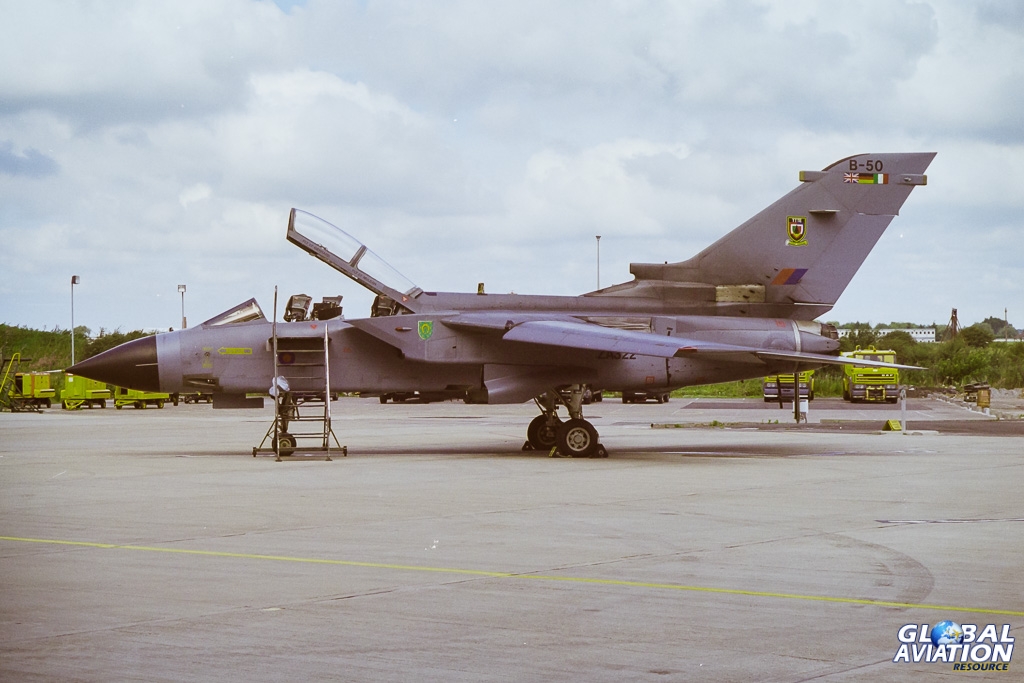
TTTE Tornado GR.1 © Rob Edgcumbe – Global Aviation Resource
RAF Germany also began receiving the Tornado in 1983, starting with XV Squadron on 1 September at RAF Laarbruch and followed by 16 Squadron in January 1984. Both units had been operating the Buccaneer. (For a full list of RAF Tornado GR squadrons, see the end of this feature).
As we have already seen in this ‘Farewell Tornado’ series, Gulf War 1 saw the ground attack Tornado initially employed in the low-level airfield denial role for which it had originally been designed, although the aircraft and its crews soon switched to medium-altitude laser-guided bombing; a new role and one for which it had most definitely not been designed!
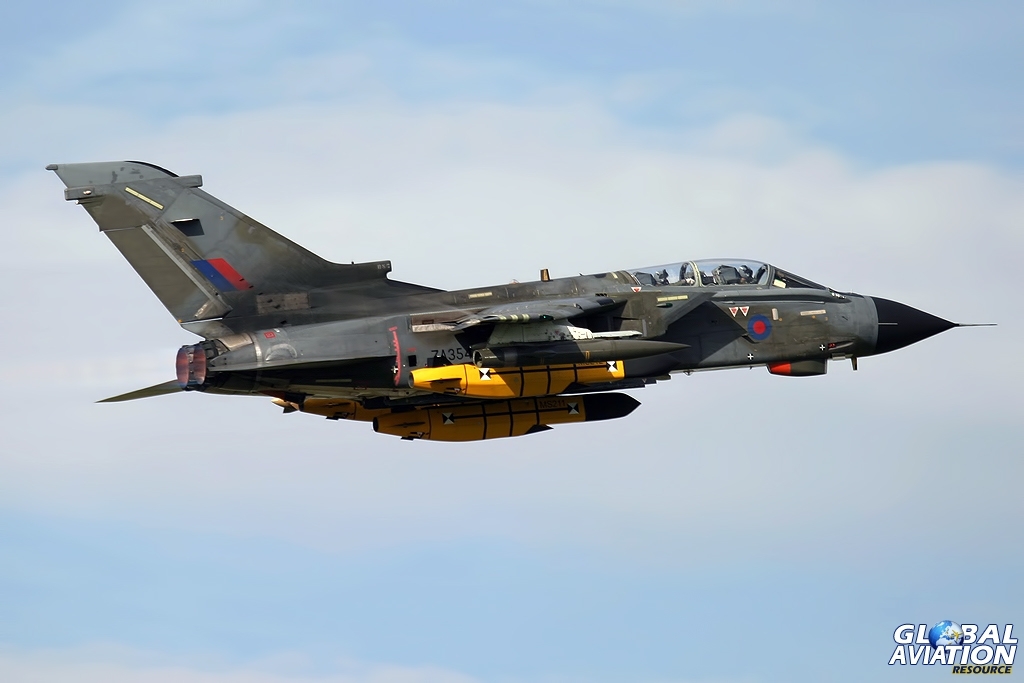
ZA354 Tornado GR.1 BAe Systems Warton 14/10/03 © John Higgins – Global Aviation Resource
The prototype Thermal Imaging Airborne Laser Designator (TIALD) pod was also introduced into service during that same campaign and this really marked the beginning of the precision attack capability that became the Tornado’s trademark and has served it so well ever since.
Indeed, since 1991 the RAF’s Tornado Force can measure its downtime from combat operations in days rather than weeks or months, with Tornado GR.1 and F.3 playing an active role in policing and combat missions over the Balkans and Iraq, then returning to Iraq in greater numbers for Operation Desert Fox in 1998 and Operation Telic in 2003; the UK’s contribution to Operation Iraqi Freedom.
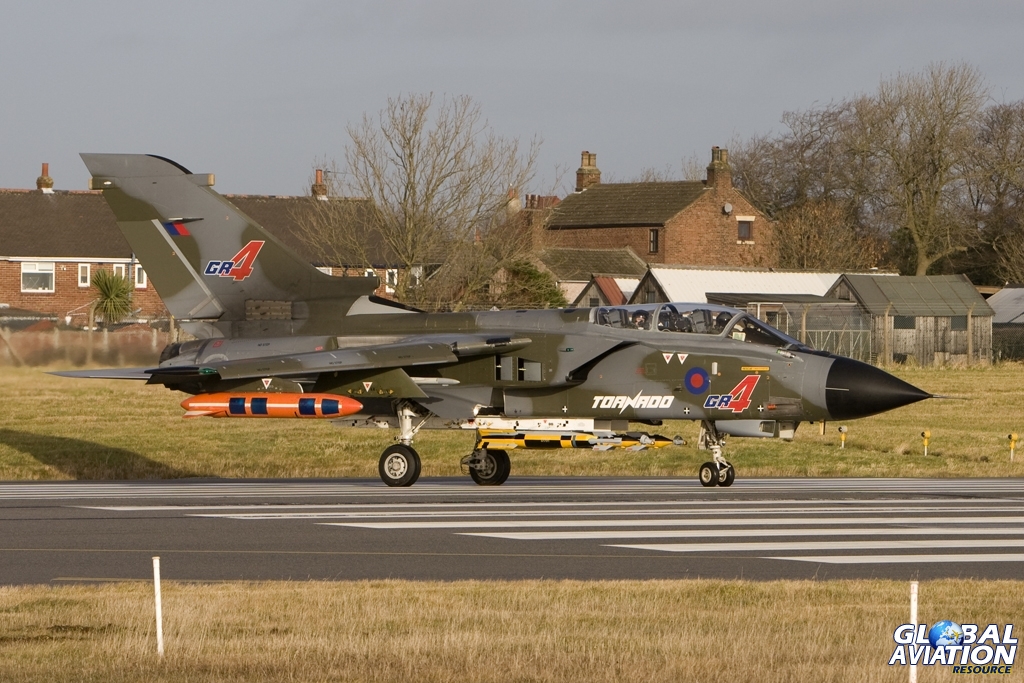
Tornado GR.4 prototype © Tom Gibbons – Global Aviation Resource
Immediately after being released from combat duties in Iraq, the Tornado deployed in support of Operation Herrick, replacing the Harrier in Afghanistan, and less than two years later the Tornado Force simultaneously deployed jets to Kandahar and Italy for Operation Ellamy, flying missions over Libya.
Op Herrick finally came to an end in 2014, just as Operation Shader began, this being the UK’s contribution to the ongoing military intervention against the Islamic State of Iraq and ISIS. Tornado, naturally, deployed for this operation too.
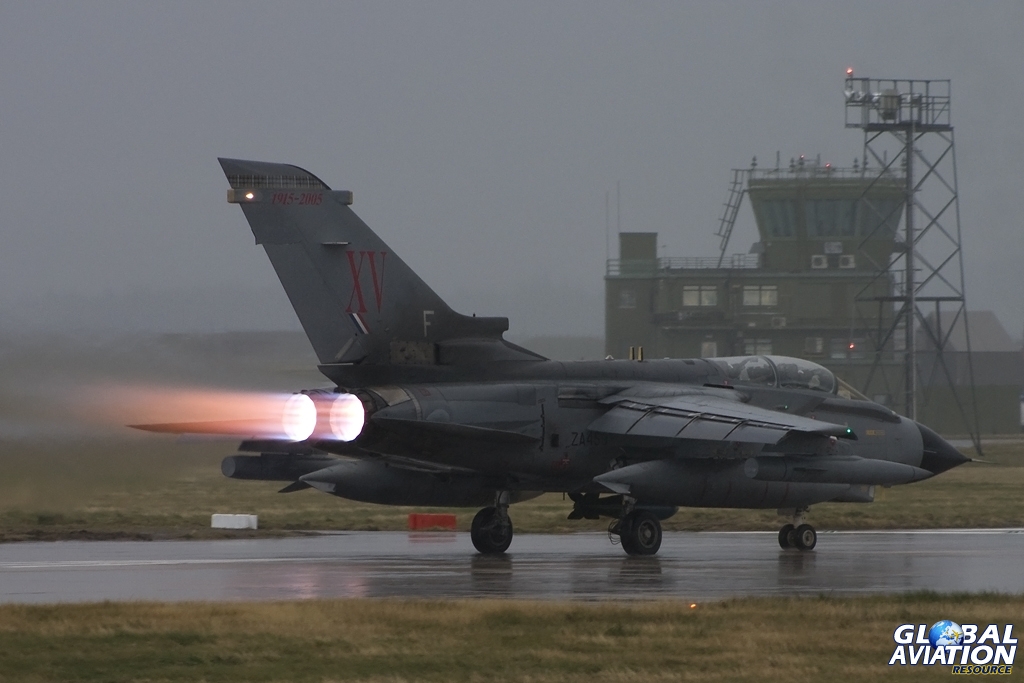
XV(R) Squadron Tornado GR.4 © Tom Gibbons – Global Aviation Resource
April 1997 saw the first flight of the RAF’s upgraded Tornado – the GR.4. Among a raft of improvements were Forward-Looking Infra-Red, a wide angle head-up display, improved cockpit displays, night-vision goggle compatibility, new avionics, new weapons systems, updated computer software and a global positioning system. The upgrade to GR.4 also equipped the Tornado with the Storm Shadow low-observable air-launched cruise missile, Brimstone advanced anti-armour weapon, and the Enhanced Paveway LGB.
New sensors included the RAPTOR (Reconnaissance Airborne Pod Tornado) and Vicon reconnaissance pods and an improved TIALD pod while a separate upgrade programme covered an integrated Defensive Aids Suite consisting of radar warning receiver, Sky Shadow radar jamming pod and BOZ-107 chaff and flare dispenser. All of the RAF’s Tornado GR.1 and GR.1A (see below) aircraft were to be converted.
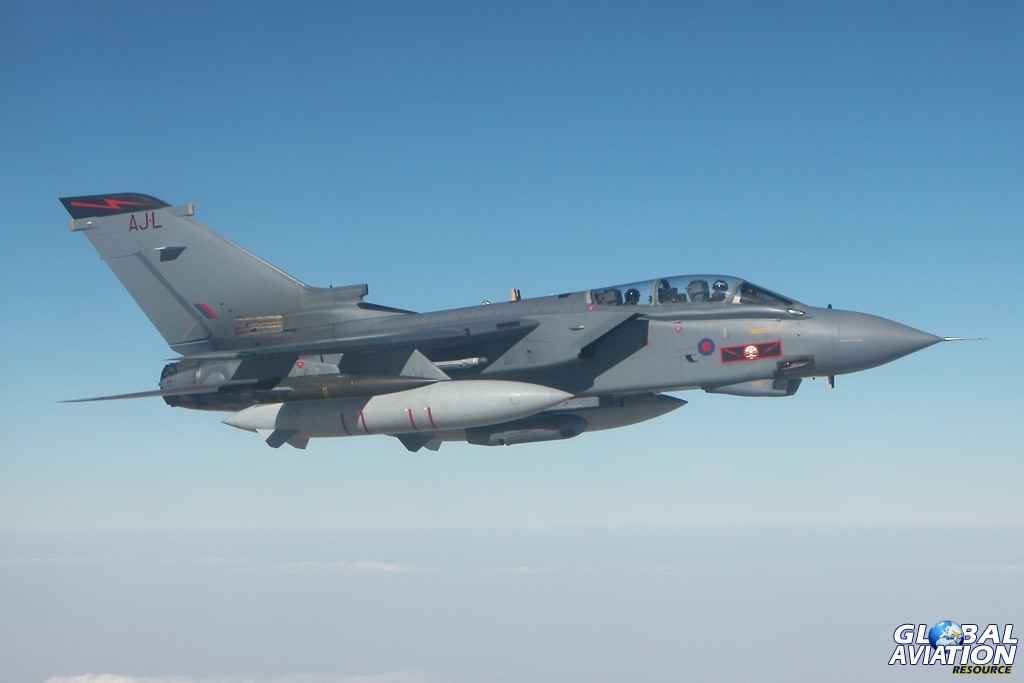
617 Squadron Tornado GR.4 © Tom Gibbons – Global Aviation Resource
During the 1980s, the RAF ordered 30 Tornado GR.1As, which were based at RAF Marham. Of these, 16 were new-build airframes and 14 were GR.1 conversions. The GR.1A and GR.4A were equipped with TIRRS (Tornado Infrared Reconnaissance System) which replaced the twin Mauser cannons usually fitted to the GR.1 and GR.4. TIRRS consisted of one SLIR (Sideways Looking Infra Red) sensor on each side of the fuselage to capture oblique images and a single IRLS (InfraRed LineScan) sensor mounted underneath the fuselage to provide vertical images. TIRRS recorded images onto S-VHS video tapes, which most definitely dates that particular piece of kit! While some GR1.A aircraft were modified to GR.4A standard, the introduction of the aforementioned RAPTOR pod saw the reconnaissance capability absorbed into the general Tornado GR.4 fleet and squadrons.
The Tornado also, for a time at least, held the RAF’s dedicated anti-shipping capability, namely with the GR.1B variant which was in service with 12 (Bomber) Squadron from 1993 and also 617 Squadron from 1994. These aircraft were modified to fire the Sea Eagle missile, but this specialist capability fell by the wayside when the GR.4 was introduced.
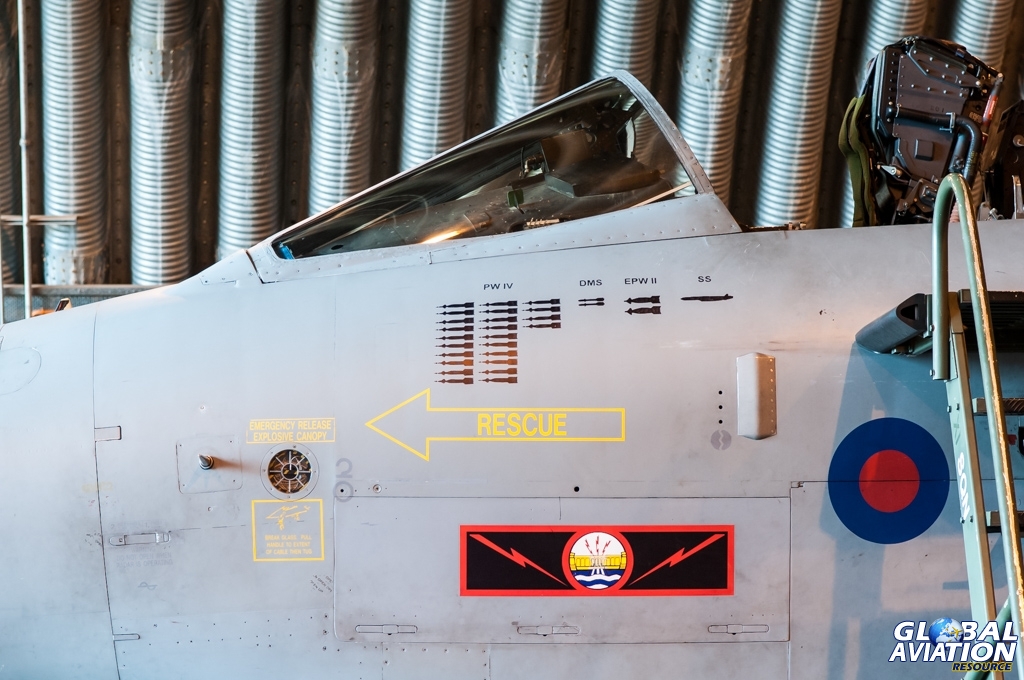
617 Squadron mission markings © Gordon Jones – Global Aviation Resource
Following Operation Ellamy in 2011, the Tornado Force began drawing down towards the type’s planned out of service date (OSD), fixed, as we now know, for March 2019. The 2010 Strategic Defence and Security Review had called for a reduction in frontline GR.4 squadrons to two, but with the need to maintain a constant deployment for Operation Shader one re-formed and 12(B) Squadron, having briefly disbanded, quickly returned as a third active unit! The squadron’s last Tornado mission took place on 14 December 2017 over Iraq and Syria and the squadron disbanded (again) on 14 February 2018, 103 years after it first formed.
This left 31 Squadron and IX Squadron, both based at RAF Marham in Norfolk, to see out the last days of the Tornado and manage both its final operational tour and its retirement.
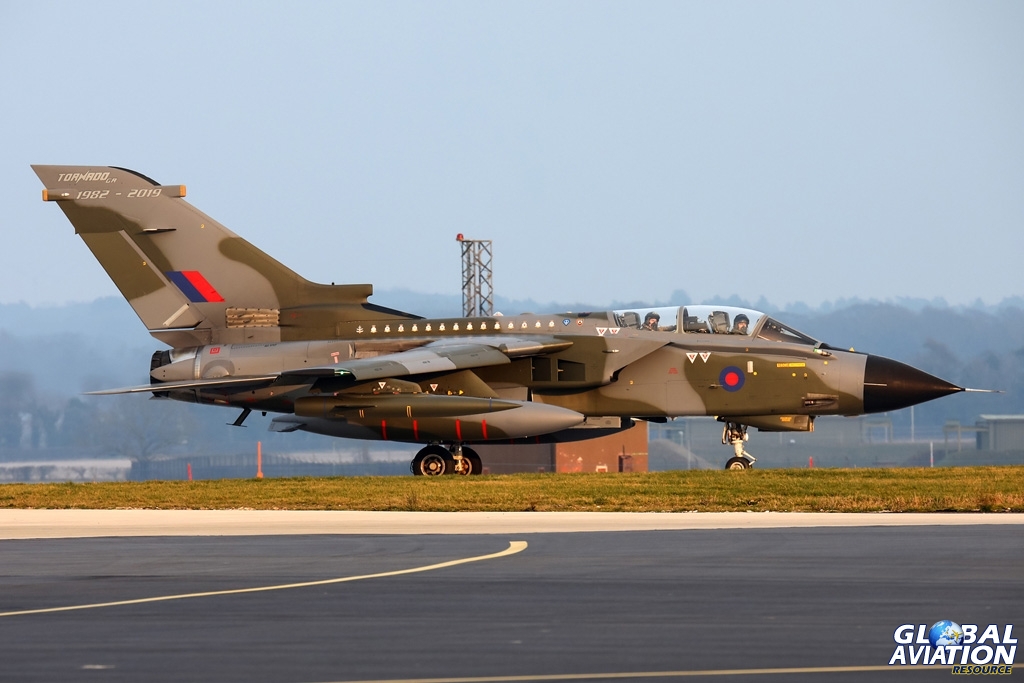
ZG752 retirement scheme © Karl Drage – Global Aviation Resource
With the aircraft’s OSD looming, the RAF commemorated the type’s lengthy service with three special schemes; ZG752 paying homage to the early years of the Tornado with a green / grey wrap-around camouflage, with ZG775 and ZD716 wearing schemes to commemorate the final units to operate the type – IX (B) Squadron and 31 Squadron respectively.
Having flown the last sorties in theatre on 31 January, Tornado finally completed its operational life when the remaining jets returned to RAF Marham from Op Shader early in February, with one transit home seeing navigator Flt Lt Chris ‘Stradders’ Stradling become the first person in history to log over 6000 Tornado hours after 31 years serving on the aircraft – quite some achievement.
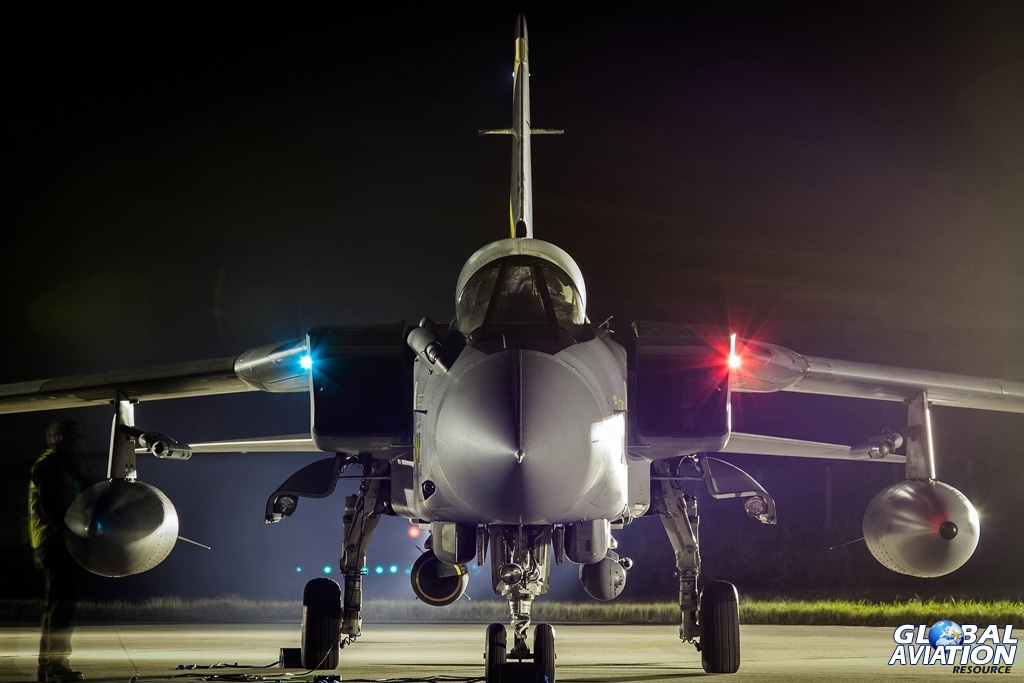
Head on – at night © Karl Drage – Global Aviation Resource
A series of ‘farewell flypasts’ were carried out across the UK on 19, 20 and 21 February covering significant locations such as BAE Warton, RAF Honington and RAF Lossiemouth, and on 28 February nine Tornados performed a diamond nine formation flypast for a graduation parade at RAF Cranwell before carrying out a series of passes over RAF Marham for a huge crowd of media and public onlookers.
The final flight of an RAF Tornado will be on 14 March 2019 during the disbandment parade of both IX (B) Squadron and 31 Squadron. IX(B) Squadron will transfer to a Typhoon squadron on 1 April 2019 and be based at RAF Lossiemouth in Scotland. 31 Squadron will reform as a Protector squadron in 2024 and will be based at RAF Waddington in Lincolnshire.
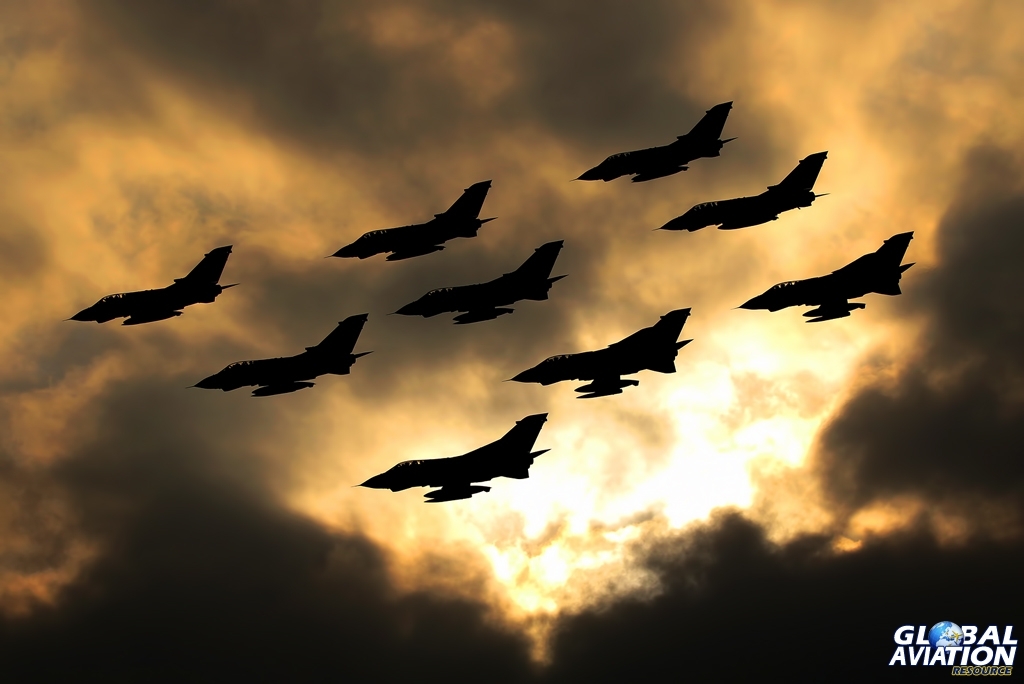
Nine ship ‘FINale’ RAF Marham 28/02/19 © John Higgins – Global Aviation Resource
The Tornado will surely go down as one of the most successful and iconic aircraft in Royal Air Force history. To have served for so long, so successfully and in so many operational theatres is a remarkable achievement for an aircraft that matured in to a world class weapon system.
We must also pay homage to the many dedicated men and women who built the aircraft, maintained the aircraft and of course flew the aircraft, including those who paid the ultimate sacrifice whether in training or combat. Tornado’s success would not have happened without you.

Tornado sunset © Karl Drage – Global Aviation Resource
‘Thank you all and farewell Tornado – we’ll miss you.’
The Royal Air Force obtained a total of 228 Tornado IDS (GR) aircraft and the units below all operated the Tornado GR.1, GR.1A, GR.1B, GR.4 and / or GR.4A:
No. II(AC) Squadron at RAF Laarbruch then RAF Marham
No. IX(B) Squadron at RAF Honington, then RAF Bruggen and RAF Marham
No. 12 Squadron at RAF Lossiemouth
No. XIII Squadron at RAF Honington then RAF Marham
No. 14 Squadron at RAF Bruggen then RAF Lossiemouth
No. XV Squadron at RAF Laarburch, then RAF Honington and RAF Lossiemouth, flying GR.4 (GR.4 Operational Conversion Unit)
No. 16 Squadron at RAF Laarbruch
No. 17 Squadron at RAF Bruggen
No. 20 Squadron at RAF Laarbruch
No. 27 Squadron at RAF Marham
No. 31 Squadron at RAF Bruggen then RAF Marham
No. 41 (Reserve) Squadron at RAF Coningsby – the Typhoon & Tornado Test and Evaluation Squadron
No. 45 Squadron (Tornado Weapons Conversion Unit) at RAF Honington
No. 617 Squadron at RAF Marham then RAF Lossiemouth
SAOEU (Strike/Attack Operational Evaluation Unit) at Boscombe Down (then incorporated into 41(R) Squadron)
Tri-National Tornado Training Establishment at RAF Cottesmore
An example from each can be seen below and we have still got more ‘Farewell Tornado’ coverage to come.

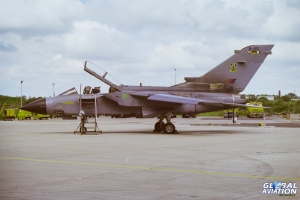
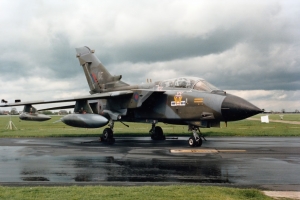
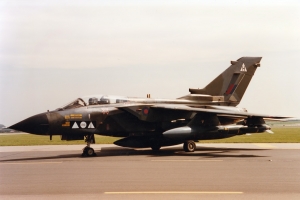
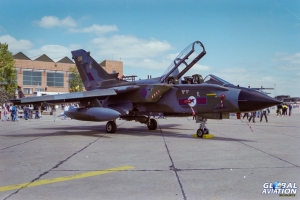
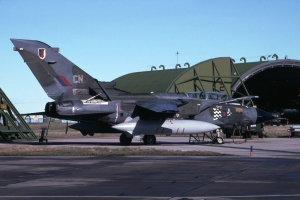
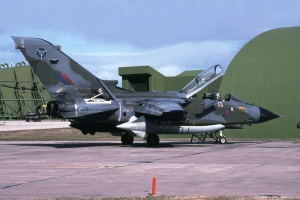

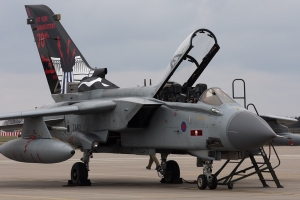
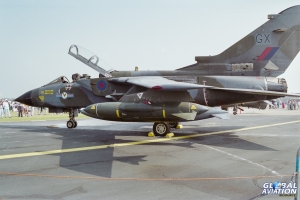

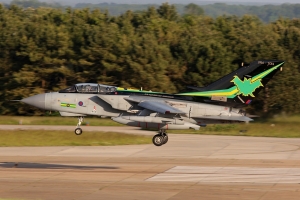
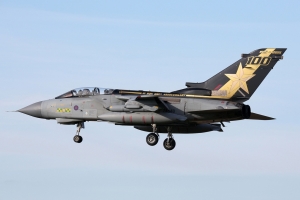
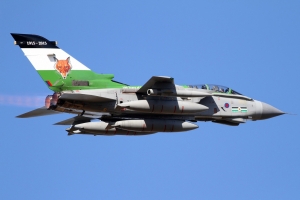
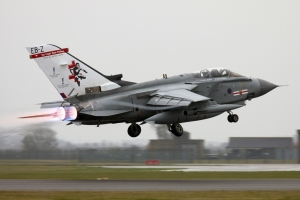
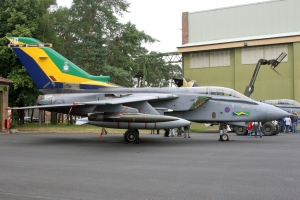
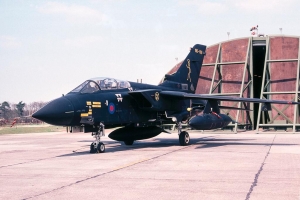

It’s a shame in an article reviewing the history of the Tornado, no mention of the ADV variant.
Otherwise excellent.
Will, as the article says, the ADV has already been covered extensively on GAR and there is even a link to all those articles.
What a fantastic report Gareth
Jeff Mellor – a Rigger with XV Squadron at Cottesmore with your dad
Thanks Jeff, great to hear from you and I appreciate the comment. Aim sure!
A great display; I am proud to have been associated with this special aircraft
Thank you so much, Michael. We greatly appreciate you taking the time to comment.